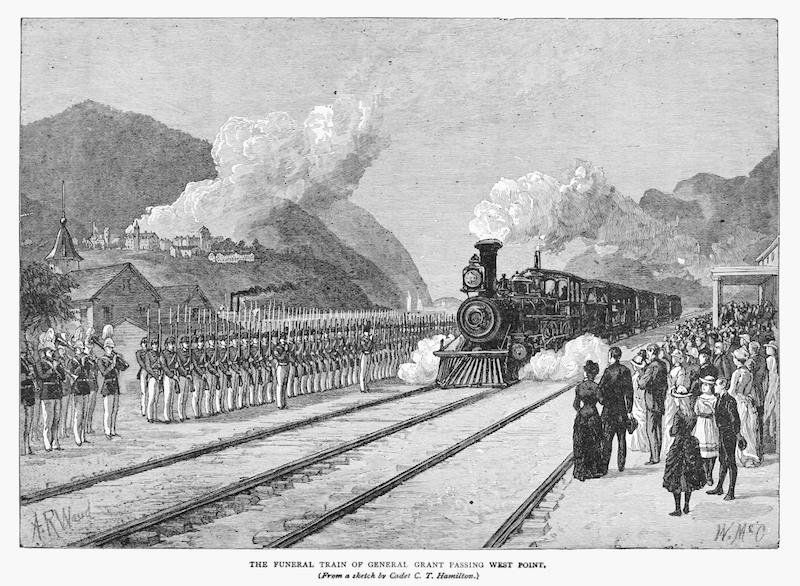 President Grant’s funeral processional marching up Broadway on August 8, 1885. Picture from Library of Congress.
President Grant’s funeral processional marching up Broadway on August 8, 1885. Picture from Library of Congress.
On August 8, 1885 New York City played host to a grieving nation as nearly a quarter of million people turned out for President Ulysses S. Grant’s funeral procession.
Considered to be one of the greatest American war heroes and an accomplished president, Grant spent the latter half of his life investing in risky business propositions that nearly left him penniless. It was during this time that he lived in New York City, which he and his wife adopted as their new home.
Grant died after a year long battle with throat cancer on July 23 at his summer estate Mount McGregor near Saratoga Springs and was brought by train to a temporary resting place in New York City. According to 19th century historian Robert McNamara, New York’s Mayor, William Russell Grace had offered the Grant family numerous sites in a number of city parks, but his son, a US Army colonel approved the Riverside Park location as most fitting because of its commanding views.
 A sketch by Cadet C.T. Hamilton of Grant’s funeral train passing through West Point on its way down from Saratoga Springs to New York City. Image via Wikipedia Commons.
A sketch by Cadet C.T. Hamilton of Grant’s funeral train passing through West Point on its way down from Saratoga Springs to New York City. Image via Wikipedia Commons.
When Grant’s body arrived in the city on August 7, it was taken to City Hall where it was laid in state for public viewing from 6am to 1am. According to the New York Tribune:
“There was no break in the stream of humanity which passed through the building to catch a passing glimpse of the face and form which has been so familiar and so dear to New Yorkers.”
On Saturday the 8th, hundreds of thousands of New Yorkers lined the procession route which traveled from City Hall up Broadway to 14th Street, then up Fifth Avenue to 57th where the procession turned back onto Broadway to finish its march up to Riverside Park. The processional itself consisted of 34,000 members of the military who had fought in Grant’s famous campaigns including the 69th New York Regiment of the Irish Brigade. And from start to finish, the entire march covered seven miles in a little over five hours before Grant’s body reached its temporary entombment in Upper Manhattan.
At the tomb was a crowd of military and political dignitaries gathered to bid the President a final farewell including President Grover Cleveland and his entire cabinet. The New York Times reported on the final moments before his burial:
“There was hardly a sound, except the roll of drums in the distance and the tread of approaching troops, while the coffin was lowered in the case and the undertaker screwed on the lid. Then the leaves of oak leaves the dead general’s grandchild Julia and Dr. Douglas’s little daughter made in the woods at Mount McGregor was placed upon it. This wreath, with others put on afterward… went into the tomb with the body.”
It wouldn’t be until 1897 that Grant’s body would be placed in the General Grant National Memorial or “Grant’s Tomb” as it’s known to many. According to Untapped Cities’s own Benjamin Waldman, the tomb was modeled after the Mausoleum of Halicarnassus and was technically unfinished.
Next, check out NYC’s Presidential Haunts from Grant to Obama and read about the Top 10 Secrets of Riverside Park.





